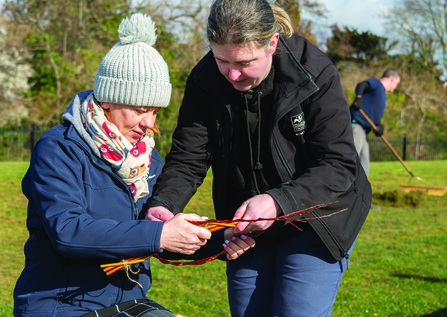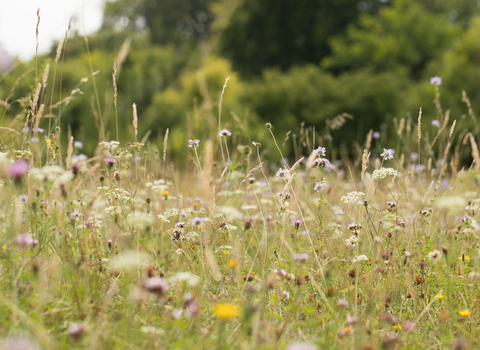Warwickshire Wildlife Trust’s ambitious new strategy has two clear objectives: creating more space for nature, and having more people on nature’s side.
Everyone can make space for nature, and we’ve started exploring how we can help others embed environmental decision-making into their practice. A great example of this is with Orbit Group – one of the UK’s largest social housing providers. With Orbit, we’re testing how our goal of having 30% of land dedicated for wildlife by 2030 can be adopted across its housing estates to provide space for nature and people. Studies have shown that people in the UK don’t have equal access to nature on their doorstep, so this project will highlight how to improve that access whilst enabling other housing providers to do the same.
Housing estates, like those of Orbit Group, can act as mini ‘pitstops’ in the landscape for our wildlife. As many estates are within urban areas they give wildlife a perfect stopping-off point on their journeys around the countryside. Some communities have enough outdoor space to become wildlife havens in their own right, whilst others are a small piece of a bigger jigsaw puzzle helping wildlife share our world.
We first assessed four housing estates in Rugby, Leamington, Stratford and Coventry for their existing wildlife value. We made some simple but effective recommendations and provided training to Orbit staff to help them implement these changes. We were also able to link in with our Wilder Communities Project, funded by Severn Trent, to create new wild flower meadows on some mown grass areas. We are now working with Orbit to review their progress, gather feedback from the people who live there, and support them to scale up the initiative nationwide.
Ian Jelley, Director of Landscape Recovery at Warwickshire Wildlife Trust, said of the project:
‘These projects in Warwickshire have shown the massive potential for improving residential sites by planting native shrubs, establishing wildflower areas, and creating rich and varied habitats for wildlife.
In some instances it’s about changing how areas are managed, by reducing mowing of grass on verges or cutting of hedges. This kind of approach can save money, reduces carbon footprints, and allows resources to be focused elsewhere to support nature’s recovery. The projects have reinforced the importance of planning and assessing sites individually to see how to make the best improvements for wildlife.’


